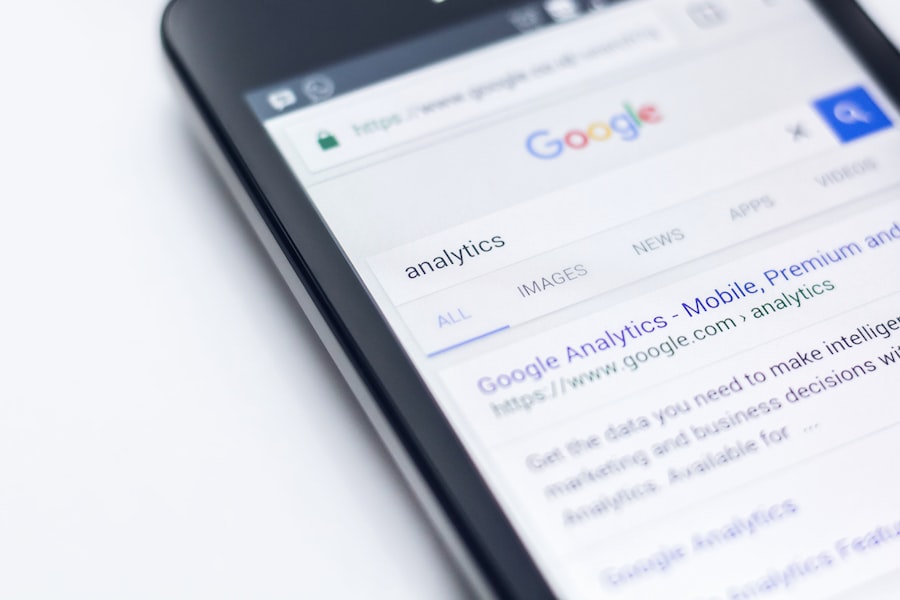Mobile-first marketing is a strategy that prioritizes mobile devices as the primary platform for reaching and engaging with consumers. With the increasing popularity and accessibility of smartphones in Southeast Asia, mobile-first marketing has become crucial for businesses looking to connect with the region’s large and diverse consumer base. In this article, we will explore the importance of mobile-first marketing in Southeast Asia and discuss various strategies and tools that can be used to effectively reach and engage with consumers in the region.
Key Takeaways
- Mobile-first marketing is crucial in Southeast Asia due to the high mobile penetration rate.
- Connected consumers in Southeast Asia are highly engaged with social media and expect personalized experiences.
- MarTech tools can help marketers optimize their mobile-first strategies and improve customer engagement.
- Social media platforms like Facebook and Instagram are popular in Southeast Asia and can be leveraged for effective mobile-first marketing.
- Creating localized and mobile-optimized content is essential for engaging with Southeast Asian consumers.
Understanding the Connected Consumers of Southeast Asia
Southeast Asia is home to a rapidly growing mobile landscape. According to a report by Google and Temasek, the number of internet users in Southeast Asia is expected to reach 480 million by 2020, with the majority accessing the internet through their smartphones. This high mobile penetration rate presents a huge opportunity for businesses to connect with consumers through mobile-first marketing strategies.
Southeast Asian consumers are known for their high engagement with mobile devices. They spend an average of 3.6 hours per day on their smartphones, which is higher than the global average. Additionally, Southeast Asian consumers are highly active on social media platforms, with 90% of internet users in the region having at least one social media account.
The Role of MarTech in Mobile-First Marketing
MarTech, or marketing technology, refers to the tools and technologies that marketers use to plan, execute, and measure their marketing campaigns. In the context of mobile-first marketing, MarTech plays a crucial role in helping businesses effectively reach and engage with consumers on their mobile devices.
There are several MarTech tools that can be used for mobile-first marketing in Southeast Asia. For example, mobile analytics tools can provide valuable insights into consumer behavior and preferences, allowing businesses to tailor their marketing strategies accordingly. Mobile advertising platforms can help businesses reach their target audience through targeted ads on mobile apps and websites. Mobile messaging platforms can be used to send personalized messages and notifications to consumers, increasing engagement and driving conversions.
Leveraging Social Media for Mobile-First Marketing in Southeast Asia
Social media usage is extremely popular in Southeast Asia, making it an ideal platform for businesses to implement mobile-first marketing strategies. According to a report by Hootsuite and We Are Social, the average internet user in Southeast Asia spends more than 3 hours per day on social media platforms.
There are several popular social media platforms in Southeast Asia that businesses can leverage for mobile-first marketing. Facebook is the most widely used social media platform in the region, with over 300 million users. Instagram and Twitter are also popular among Southeast Asian consumers. Additionally, there are several local social media platforms that are widely used in specific countries, such as Line in Thailand and Indonesia, WeChat in Malaysia and Singapore, and KakaoTalk in South Korea.
To effectively use social media for mobile-first marketing in Southeast Asia, businesses should focus on creating engaging and shareable content, leveraging influencers and user-generated content, and utilizing targeted advertising options offered by these platforms.
Creating Mobile-Optimized Content for Southeast Asian Consumers
Creating mobile-optimized content is essential for businesses looking to engage with Southeast Asian consumers on their smartphones. Mobile-optimized content refers to content that is specifically designed and formatted for optimal viewing and interaction on mobile devices.
There are several types of mobile-optimized content that businesses can create for Southeast Asian consumers. Mobile-friendly websites are crucial, as they ensure that consumers can easily navigate and interact with a business’s website on their smartphones. Mobile apps are also popular among Southeast Asian consumers, so businesses should consider developing a mobile app to provide a seamless and personalized user experience. Additionally, businesses can create mobile-friendly videos, infographics, and interactive content that are easily consumable on mobile devices.
When creating mobile-optimized content for Southeast Asian consumers, businesses should keep in mind the region’s diverse cultural and linguistic preferences. It is important to ensure that the content is relevant and resonates with the target audience in each specific country.
The Importance of Localization in Mobile-First Marketing

Localization refers to the process of adapting a product or service to meet the specific needs and preferences of a particular market or audience. In the context of mobile-first marketing in Southeast Asia, localization is crucial for businesses looking to effectively engage with consumers in the region.
Southeast Asia is a culturally diverse region, with each country having its own unique language, customs, and traditions. Therefore, businesses need to localize their mobile-first marketing strategies to ensure that they resonate with consumers in each specific country.
There have been several successful examples of localized mobile-first marketing campaigns in Southeast Asia. For example, McDonald’s launched a campaign in Indonesia that incorporated local flavors and ingredients into their menu items, which resonated well with Indonesian consumers. Similarly, Coca-Cola launched a campaign in Thailand that featured local celebrities and cultural references, which helped them connect with Thai consumers on a deeper level.
Building a Mobile-First Marketing Strategy for Southeast Asia
Building a mobile-first marketing strategy for Southeast Asia requires careful planning and consideration. Here are some steps to follow when building a mobile-first marketing strategy:
1. Understand the target audience: Conduct market research to gain insights into the preferences, behaviors, and needs of your target audience in each specific country.
2. Set clear objectives: Define your goals and objectives for your mobile-first marketing strategy. Are you looking to increase brand awareness, drive website traffic, or generate leads?
3. Choose the right channels: Identify the social media platforms and other digital channels that are most popular among your target audience in each specific country.
4. Create engaging content: Develop mobile-optimized content that is relevant, engaging, and shareable. Consider leveraging user-generated content and influencers to increase engagement.
5. Implement targeted advertising: Utilize the targeting options offered by social media platforms and other digital advertising platforms to reach your target audience effectively.
6. Measure and analyze results: Track and measure the performance of your mobile-first marketing campaigns using analytics tools. Use the insights gained to optimize your strategies and improve results.
Measuring Success in Mobile-First Marketing Campaigns
Measuring success is crucial for businesses looking to evaluate the effectiveness of their mobile-first marketing campaigns and make data-driven decisions. Here are some metrics to track in mobile-first marketing campaigns:
1. Reach: Measure the number of people who have been exposed to your mobile-first marketing campaigns. This can be done through impressions, reach, and engagement metrics.
2. Engagement: Track the level of engagement with your mobile-first marketing campaigns, such as likes, comments, shares, and click-through rates.
3. Conversions: Measure the number of conversions generated through your mobile-first marketing campaigns, such as leads generated, sales made, or app downloads.
4. Return on investment (ROI): Calculate the return on investment for your mobile-first marketing campaigns by comparing the cost of the campaign to the revenue generated.
There are several tools available for measuring success in mobile-first marketing campaigns in Southeast Asia. Google Analytics is a popular tool that provides valuable insights into website traffic, user behavior, and conversions. Social media platforms also offer analytics tools that allow businesses to track the performance of their mobile-first marketing campaigns on these platforms.
Overcoming Challenges in Mobile-First Marketing in Southeast Asia
While mobile-first marketing presents numerous opportunities for businesses in Southeast Asia, there are also several challenges that need to be overcome. Some common challenges include:
1. Language barriers: Southeast Asia is a linguistically diverse region, with each country having its own language or dialect. Businesses need to overcome language barriers by localizing their content and ensuring that it resonates with consumers in each specific country.
2. Infrastructure limitations: Some countries in Southeast Asia have limited internet connectivity and infrastructure, which can pose challenges for businesses looking to implement mobile-first marketing strategies. Businesses need to consider these limitations and adapt their strategies accordingly.
3. Cultural differences: Southeast Asia is a culturally diverse region, with each country having its own unique customs, traditions, and preferences. Businesses need to understand and respect these cultural differences when implementing mobile-first marketing strategies.
To overcome these challenges, businesses should conduct thorough market research, work with local partners or agencies, and continuously monitor and adapt their strategies based on consumer feedback and market trends.
Future Trends in Mobile-First Marketing for Southeast Asia
The future of mobile-first marketing in Southeast Asia looks promising, with several emerging trends on the horizon. Here are some predictions for the future of mobile-first marketing in the region:
1. Increased adoption of mobile payment solutions: As smartphone usage continues to grow in Southeast Asia, so does the adoption of mobile payment solutions. Businesses should consider integrating mobile payment options into their mobile-first marketing strategies to provide a seamless and convenient user experience.
2. Rise of video content: Video content is becoming increasingly popular among Southeast Asian consumers, with platforms like YouTube and TikTok gaining traction in the region. Businesses should focus on creating engaging and shareable video content to effectively reach and engage with consumers on their smartphones.
3. Personalization and AI-driven marketing: With advancements in artificial intelligence (AI) technology, businesses can now leverage AI-driven marketing tools to personalize their mobile-first marketing campaigns. Personalization is key to effectively engage with consumers on their smartphones, and AI can help businesses deliver personalized experiences at scale.
In conclusion, mobile-first marketing is crucial for businesses looking to connect with consumers in Southeast Asia’s rapidly growing mobile landscape. By understanding the characteristics of Southeast Asian consumers, leveraging MarTech tools, utilizing social media platforms, creating mobile-optimized content, implementing localization strategies, and measuring success, businesses can effectively reach and engage with consumers on their smartphones. As the region continues to embrace mobile technology, it is essential for businesses to adopt mobile-first marketing strategies to stay competitive and capitalize on the opportunities presented by the mobile revolution in Southeast Asia.
If you’re interested in learning more about Mobile-First Marketing and how it can help you reach the connected consumers of Southeast Asia, be sure to check out this insightful article from MarTech. They delve into the strategies and technologies that can effectively engage this tech-savvy audience. Discover how MarTech is revolutionizing marketing in Southeast Asia by visiting https://martech.com.my/.
FAQs
What is Mobile-First Marketing?
Mobile-First Marketing is a marketing strategy that prioritizes mobile devices as the primary platform for reaching and engaging with consumers. It involves creating content and campaigns that are optimized for mobile devices, such as smartphones and tablets.
What is MarTech?
MarTech, short for Marketing Technology, refers to the tools and technologies that marketers use to plan, execute, and measure their marketing campaigns. MarTech includes a wide range of software and platforms, such as social media management tools, email marketing software, and analytics platforms.
Why is Mobile-First Marketing important in Southeast Asia?
Mobile devices are the primary means of accessing the internet in Southeast Asia, with over 90% of internet users in the region accessing the internet via mobile devices. This makes mobile devices a crucial platform for reaching and engaging with consumers in the region.
What are some examples of Mobile-First Marketing strategies?
Some examples of Mobile-First Marketing strategies include creating mobile-optimized websites and landing pages, developing mobile apps, using SMS and messaging apps for customer communication, and leveraging social media platforms that are popular on mobile devices.
What are some challenges of implementing Mobile-First Marketing in Southeast Asia?
Some challenges of implementing Mobile-First Marketing in Southeast Asia include the diversity of languages and cultures in the region, the fragmentation of mobile platforms and devices, and the need to navigate complex regulatory environments in some countries.

